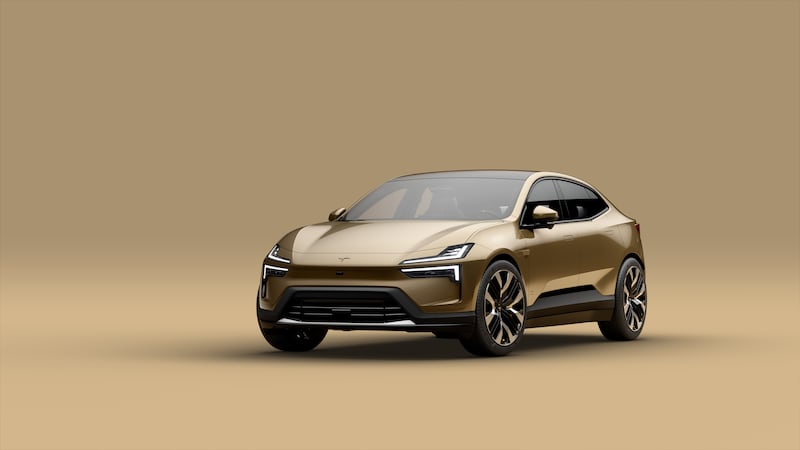Polestar promised to do things its own way when it morphed from being Volvo's high performance wing to a manufacturer of cool, premium EVs - and by ditching a back window, its newest model certainly does things differently, writes William Scholes.
When Volvo's Chinese owner Geely decided that Polestar's future no longer lay in fettling XC60 SUVs, a new electric-only plan was mapped out for the brand.
The company is headquartered in Sweden, with the main battery, motor and software taking place outside Gothenburg. And while the cars' design has an obviously Swedish aesthetic, there is very much an international feel to Polestar. The company's main engineering centre is in England, for example, and the cars are built in China. And its shares are traded in New York on the Nasdaq stock exchange.

Polestar's first two offerings looked like they should have been wearing Volvo badges. No bad thing, perhaps, as Volvo has one of the best design languages around, but not especially useful if you're trying to give your brand a bold new identity.
The first - the Polestar 1 - arrived in 2019 as a large, expensive and very handsome GT which, somewhat confusingly, wasn't even an EV. Rather, it was a plug-in hybrid, albeit with a generous electric range of around 90 miles. Just 1,500 were built, serving as a taster for the Polestar 2 which was aimed squarely at the mass market. Think of it as a better built and more smartly designed rival for the Tesla Model 3, and you'll not be far wrong. It's a very nice car.
For its next act, Polestar is heading off into its own design direction. Coming later this year is the Polestar 3, a large SUV which will start at around £80k, meaning it's not quite for everyone… It is lovely looking though, and unlikely to be confused with a Volvo.
The latest addition to the range is the Polestar - you've guessed it… - 4. Smaller than the 3 but a little larger than the 2, the Polestar 4 is a bang-on-trend SUV coupe. And just so you know it's something a bit out of ordinary, they've only gone and designed it without a back window…
Instead of a rear-view mirror, Polestar give you a high-definition screen which shows the image from a roof-mounted rear camera which, they say, gives "a far wider field of view than what can be experienced in most modern cars".

The arrangement isn't a gimmick, at least if you listen to what Maximilian Missoni, the immaculately maintained Polestar head designer, says. Pushing back the rear 'header', the structural element which normally surrounds a rear window, allows a glass roof to sweep over the heads of back seat passengers.
"This means that now, rear occupants can have a unique experience in our SUV coupé," says Missoni. The standard full-length glass roof is available with an optional electrochromic function, allowing for it to be opaque or transparent depending on your mood.
Indeed, the Polestar 4's interior looks like it has a real wow factor to go with its confident and stylish exterior. The design speaks for itself; you'll either buy into the 'no rear window' idea or not.

Meanwhile, it is also the fastest production car the brand has developed. The 0-62 mph sprint is dealt with in as little as 3.8 seconds and maximum power output is around 535bhp (with a chunky 506lb ft of torque) in the dual-motor version. Dual-motor cars are all-wheel-drive, with single-motor (268bhp/253lb ft) cars driving the rear wheels.
Long-range cars get a 102kWh battery, with a target of 350 miles' range for the dual-motor car and around 370 miles for the single-motor version.
Tech highlights include a central 15.4-inch landscape-oriented digital screen and built in Google, including Google's Assistant, Play and, of course, Maps. In front of the driver is a 10.2-inch digital screen and a head-up display with a 14.2-inch projection area - complete with a neat 'snow mode' which turns the text from white to yellow, for better visibility. The Volvo link is strong, so safety is well catered for - how do 12 cameras, one radar and 12 ultrasonic sensors sound?
The Polestar 4 is, as you might gather, a premium product and will be priced accordingly. Expect it to start from around £55,000 when it goes on sale next year.






